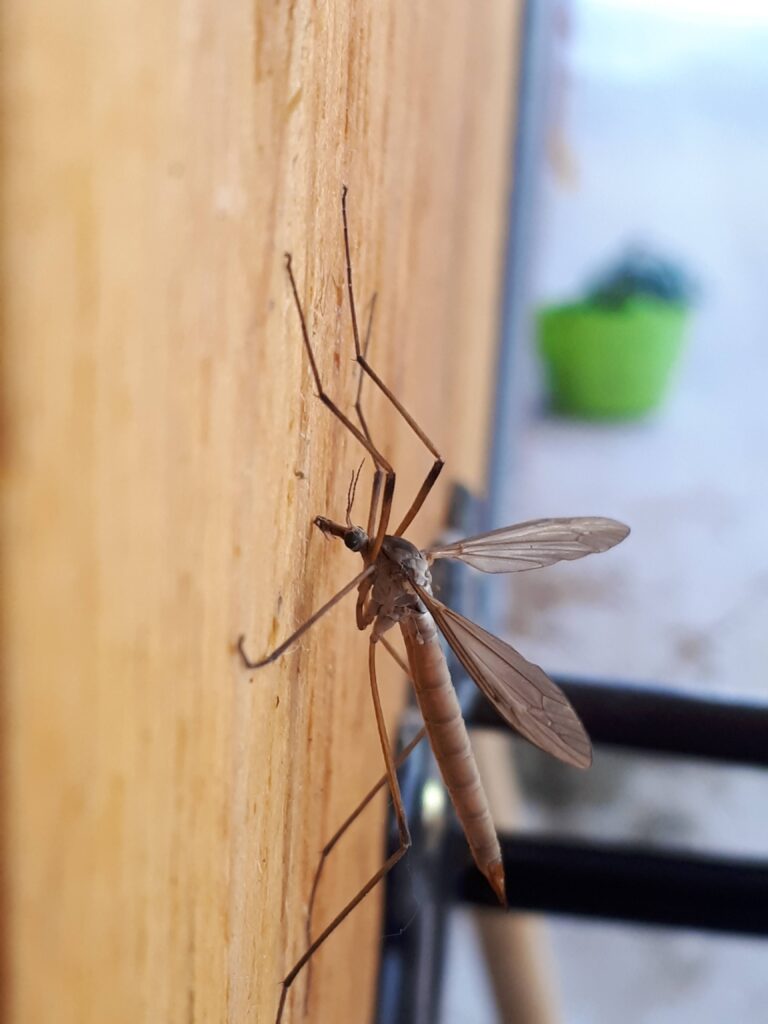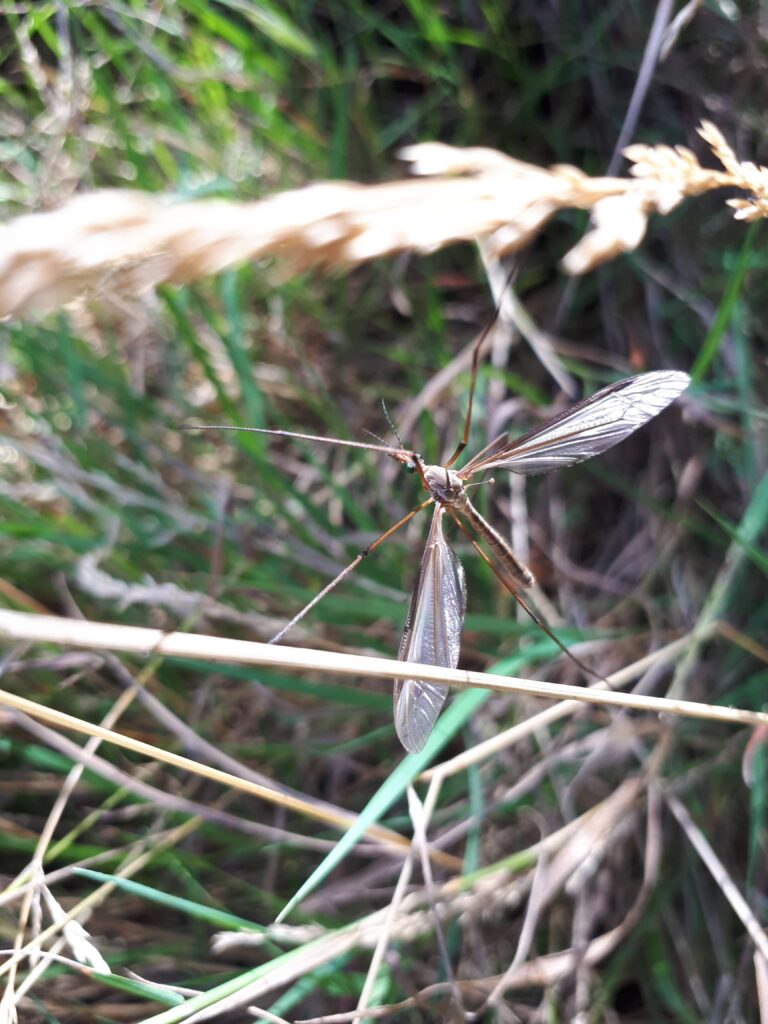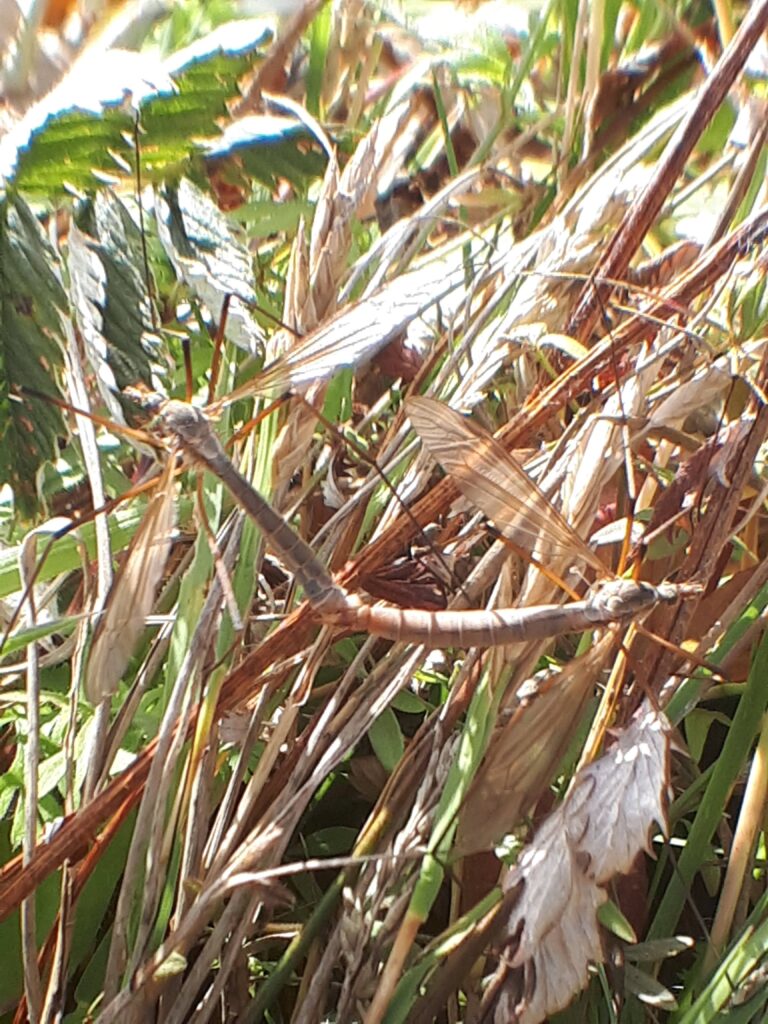Crane Fly (Tipulidae)

If you spent much time outside in the fall, you’ve likely seen one of these slender specimens. The Crane fly family (Tipulidae) is a very speciose group of the order Diptera, consisting of over 15,000 described species, with 151 of these species found in BC. These rust-brown flies are some of the largest in the province, with an incredible wingspan and long slender legs. Characteristic of the order Diptera, they possess a pair of halteres, a modified form of a second pair of wings, which look like small wands behind their full wings. BC’s largest fly (in terms of wingspan) is a type of Crane fly, Holorusia hespera, with a wingspan of up to 85mm!

Crane flies are widespread and live in various different environments. Most prefer a damp environment, so they are definitely a regular visitor to Esquimalt Gorge park. These flies develop as larvae in both freshwater and intertidal zones, even in fast moving streams. Larvae can also develop in moss, leaf litter, fungi, and more, contributing to this family’s broad habitat range. It is also this broad range that has lead to the huge diversity of the species within the Tipulidae family. Because the larvae can develop in water systems, they are sensitive to pollutants, such as pesticides in water, and their population numbers can decline as a result.

Crane fly larvae are often called “leather jackets” due to their leathery-looking skin. They are an introduced species and sometimes considered a pest due to their choice of nest for their eggs. Larvae often hatch among grasses and feed on the roots which can harm the plants. Their big appetite can lead to dead patches and weaken the plants they feed on. They are mostly feeding on lawn grass when this occurs, making them more of a nuisance than an economic or agricultural pest. The damage from the larvae can largely be mitigated with proper lawn care. They need to get all the nutrients they can while they are larvae, because once they reach adulthood, they live no longer than a few weeks before they die. During their adulthood, all their energy is spent finding a mate and laying eggs, so you need not worry about this large insect bothering you: they have much more important things to be doing!
Find out more at E-Fauna BC, GardeningKnowHow, and Orkin Canada


